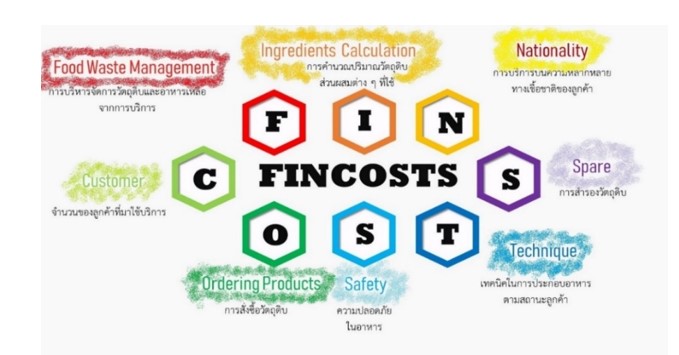Breakfast Management Model for Hotel Dining Rooms of Medium Size in Bangkok and the Periphery
Main Article Content
Abstract
The purpose of this study was to look into a model of managing breakfast for hotel dining rooms of medium size in Bangkok and the Periphery. It was qualitative research conducted using in-depth interviews with an interview guide approach; the sampling and key information were provided by eight informants who have experience and expertise in cooking as well as kitchen and dining management in hotels. The tools used for data collection were a semi-structured interview, observation, field notes, and voice recorders. According to the findings of this study, a medium-sized dining room in Bangkok and the Periphery’s breakfast management model have the following eight dimensions: 1) Number of customers 2) Nationality of customer; 3) Ingredient calculation; 4) Ingredient purchasing; 5) Safety of breakfast; 6) Management technique at service points 7) Ingredient reserves; and 8) Unused ingredient management. These findings might suggest that breakfast and kitchen management guidelines for medium-sized hotel dining rooms could improve patron satisfaction, their experience with service, and their intention to return.
Article Details
References
จําเนียร จวงตระกูล วอนชนก ไชยสุนทร ตระกูล จิตวัฒนากร เทอดศักดิ์ โรจน์สุรกิตติ สมิตา กลิ่นพงศ์ และรุจิรา ริคารมย์. (2564). ทางเลือกใหม่ในการวิเคราะห์เนื้อหาเพื่อวิเคราะห์ข้อมูลการวิจัยเชิงคุณภาพจากข้อมูลการสนทนากลุ่มแบบออนไลน์. สมาคมรัฐประศาสนศาสตร์แห่งประเทศไทย, 3(6), 1-18.
ชัยนันต์ ไชยเสน. (2559). ประเด็นท้าทายและแนวทางประสบความสำเร็จในการควบคุมต้นทุนอาหารและเครื่องดื่มในธุรกิจโรงแรม. วารสารวิชาการการท่องเที่ยวไทยนานาชาติ, 12(1), 23-45.
ณกร อินทร์พยุง. (2560). โครงการระบบจัดลำดับงานและติดตามวัตถุดิบคงคลังในครัว โดยใช้ระบบเมนูอาหารอิเล็กทรอนิกส์เพื่อเพิ่มประสิทธิภาพในการบริหารจัดการร้านอาหาร. รายงานวิจัยฉบับสมบูรณ์ งบประมาณ พ.ศ.2560. [รายงานวิจัยฉบับสมบูรณ์]. มหาวิทยาลัยบูรพา
ปิยพรรณ กลั่นกลิ่น. (2549). อาหารเครื่องดื่มและการบริการในภัตตาคาร (พิมพ์ครั้งที่ 2). สำนักพิมพ์โอเดียนสโตร์
สุภางค์ จันทวานิช. (2556). การวิเคราะห์ข้อมูลในการวิจัยเชิงคุณภาพ (พิมพ์ครั้งที่ 21). สำนักพิมพ์แห่งจุฬาลงกรณ์มหาวิทยาลัย.
Centers for Disease Control and Prevention. (2018, 24 September). The Food Production Chain. https://www.cdc.gov/foodsafety/outbreaks/investigatingoutbreaks/production-chain.html
Cousins, J., Foskett, D., & Gillespie, C. (2002). Food and Beverage Management (Edition 2). Prentice Hall.
Lattin, G.W. (1998). The Lodging and Food Service Industry (Edition 4). The Educational Institute of the American Hotel & Motel Association.
Ninemeier J.D. (2000). Management of Food and Beverage Operations (Edition 3). The Educational Institute of the American Hotel & Motel Association.
Puttachard Lunkam. (2564, 24 กุมภาพันธ์). แนวโน้มธุรกิจ/อุตสาหกรรม ปี 2564-2566: ธุรกิจโรงแรม 2564. https://www.krungsri.com/th/research/industry/industry-outlook/services/hotels/io/io-hotel-21
Schnittker, R., Marshall, S., Horberry, T., & Young, K. L. (2018). Human factors enablers and barriers for successful airway management–an in‐depth interview study. Anaesthesia, 73(8), 980-989.
Zurbrugg, C. (2002, November). Urban solid waste management in low-income countries of Asia how to cope with the garbage crisis. [Presented for]. Scientific Committee on Problems of the Environment (SCOPE) Urban Solid Waste Management Review Session, Durban 6, South Africa.

